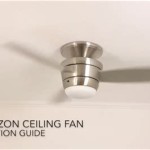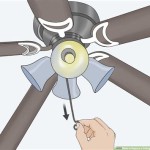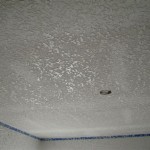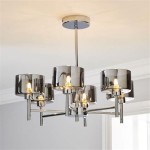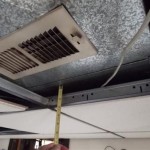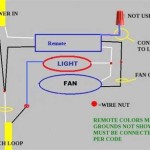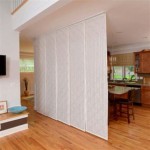What is Gypsum False Ceiling Design?
Gypsum false ceiling design refers to the creation and installation of secondary ceilings made primarily from gypsum plasterboard. Suspended below the main structural ceiling, these false ceilings, also known as drop ceilings or suspended ceilings, offer a combination of aesthetic appeal and functional benefits. They are widely used in residential, commercial, and institutional spaces to enhance interior design, improve acoustics, conceal wiring and ductwork, and provide thermal insulation.
Gypsum, a naturally occurring mineral composed of calcium sulfate dihydrate, is the primary component of gypsum plasterboard. This material is chosen for its fire-resistant properties, ease of workability, and relatively lightweight nature. The plasterboard is manufactured by sandwiching a core of gypsum plaster between two layers of paper facing. This results in a strong, durable, and easily customizable material suitable for a wide range of ceiling designs.
The installation of a gypsum false ceiling involves suspending a grid system from the main ceiling using wires or metal channels. This grid system then supports the gypsum boards, which are cut and fitted to create the desired design. Joints between the boards are typically filled with jointing compound and sanded smooth to create a seamless appearance. The finished surface can then be painted, textured, or otherwise decorated to match the overall interior design scheme.
Aesthetic Enhancement with Gypsum False Ceilings
One of the primary reasons for choosing a gypsum false ceiling is its ability to significantly enhance the aesthetics of a room. Unlike traditional concrete ceilings, gypsum allows for a wide variety of design possibilities. These include smooth, flat surfaces, intricate patterns, curves, and recessed lighting options. The flexibility of the material makes it easy to create custom designs that complement the style and character of the space.
The seamless finish achievable with gypsum false ceilings contributes to a clean and modern look. Properly installed and finished gypsum boards create a uniform surface, free from imperfections that might detract from the overall aesthetic. This allows for a more refined and sophisticated appearance, particularly when combined with thoughtfully planned lighting.
Furthermore, gypsum false ceilings can be used to conceal unsightly elements such as exposed pipes, wiring, and ductwork. This is particularly useful in older buildings where these elements may be visually disruptive. By hiding these features, the false ceiling creates a more uncluttered and visually appealing space.
Decorative elements can be easily incorporated into gypsum false ceiling designs. These might include cornices, moldings, and other architectural details that add visual interest and character to the room. The lightweight nature of gypsum makes it suitable for creating these decorative features without adding excessive weight to the ceiling structure.
The ability to integrate various lighting options is another key aesthetic benefit. Recessed lighting, such as spotlights and downlights, can be seamlessly integrated into the gypsum ceiling, providing focused and even illumination. Cove lighting, which directs light upwards onto the ceiling, can create a soft and ambient glow. These lighting options not only enhance the visual appeal of the room but also contribute to its overall functionality.
Functional Benefits of Gypsum False Ceilings
Beyond aesthetics, gypsum false ceilings offer several important functional benefits. These include improved acoustics, enhanced thermal insulation, and the ability to conceal essential services.
Acoustic performance is a significant consideration in many spaces, particularly in offices, classrooms, and home theaters. Gypsum false ceilings can be designed to absorb sound, reducing reverberation and echo. This creates a more comfortable and productive environment, especially in spaces where noise levels are a concern. This is often achieved by incorporating acoustic insulation materials above the gypsum boards or by using perforated gypsum boards designed for sound absorption.
Thermal insulation is another important benefit. The space between the main ceiling and the gypsum false ceiling can act as an insulation barrier, helping to regulate temperature within the room. This can reduce energy consumption by minimizing heat loss in the winter and heat gain in the summer. Insulation materials such as fiberglass or mineral wool can be added to further enhance the thermal performance of the ceiling.
The concealment of services is a practical advantage of gypsum false ceilings. As mentioned earlier, they can hide unsightly pipes, wiring, and ductwork. This not only improves the aesthetic appearance of the room but also provides easy access to these services for maintenance and repairs. Access panels can be strategically placed in the ceiling to allow workers to reach the services without having to remove large sections of the ceiling.
Fire resistance is another crucial functional benefit of gypsum. Gypsum is a naturally fire-resistant material, and gypsum plasterboard is often used as a passive fire protection measure in buildings. In the event of a fire, the gypsum plasterboard will slowly release water vapor, which helps to slow the spread of flames and provides valuable time for evacuation.
Furthermore, gypsum false ceilings can also contribute to improved indoor air quality. Gypsum is a non-toxic and inert material, and gypsum plasterboard does not emit harmful volatile organic compounds (VOCs). This makes it a safe and healthy choice for interior spaces.
Considerations for Gypsum False Ceiling Design and Installation
While gypsum false ceilings offer numerous benefits, there are several important considerations to keep in mind during the design and installation process. These include structural integrity, lighting integration, maintenance access, and cost factors.
Structural integrity is paramount. The suspension system that supports the gypsum boards must be strong and properly installed to ensure the ceiling is stable and secure. It is essential to consult with a qualified structural engineer to determine the appropriate load-bearing capacity of the suspension system, especially in larger spaces or when incorporating heavy lighting fixtures.
Lighting integration requires careful planning. The type and placement of lighting fixtures should be considered early in the design process to ensure they are compatible with the gypsum ceiling and provide the desired illumination. Electrical wiring must be properly installed and concealed within the ceiling cavity, and access panels should be provided for maintenance.
Maintenance access is an often-overlooked but crucial consideration. Access panels should be strategically placed to allow for easy access to wiring, plumbing, and other services located above the ceiling. The size and location of these panels should be carefully planned to ensure they provide adequate access without compromising the aesthetic appearance of the ceiling.
Cost is always a factor in any construction project. The cost of a gypsum false ceiling will depend on several factors, including the size of the space, the complexity of the design, the type of materials used, and the labor costs in the area. It is important to obtain multiple quotes from reputable contractors and to carefully consider the long-term value of the ceiling in terms of aesthetics, functionality, and energy efficiency.
Moisture resistance is another important consideration, particularly in bathrooms and kitchens. Standard gypsum plasterboard is not suitable for use in high-moisture environments, as it can absorb moisture and become damaged. Moisture-resistant gypsum boards are available, which are specifically designed for use in these areas. These boards are treated with a special coating that makes them more resistant to water damage.
Finally, proper ventilation is essential to prevent moisture buildup and mold growth within the ceiling cavity. Ventilation can be achieved by providing vents or openings in the ceiling to allow air to circulate. This is particularly important in areas with high humidity or where there is a risk of water leaks.
In summary, gypsum false ceiling design offers a versatile and effective solution for enhancing the aesthetics and functionality of interior spaces. By carefully considering the design, installation, and maintenance aspects, it is possible to create a ceiling that is both beautiful and practical.

Gypsum False Ceiling Vs Pop Designcafe

Why Choose Gypsum False Ceiling

60 False Ceiling Design Ideas 2025 Modern Pop And Gypsum Designs

What About False Ceiling Design

Gypsum False Ceiling For Home Decor Ideas By Livspace

330 Gypsum Board Ceiling Ideas In 2025 False Design Modern

Gypsum False Ceiling Vs Pop Designcafe

35 Gypsum Board False Ceiling Design Ideas Engineering Discoveries

100 Gypsum Ceiling Design Ideas 2024 False For Living Room Pop Home Decor

Gypsum Board False Ceiling In Bangalore Gyproc
Related Posts

